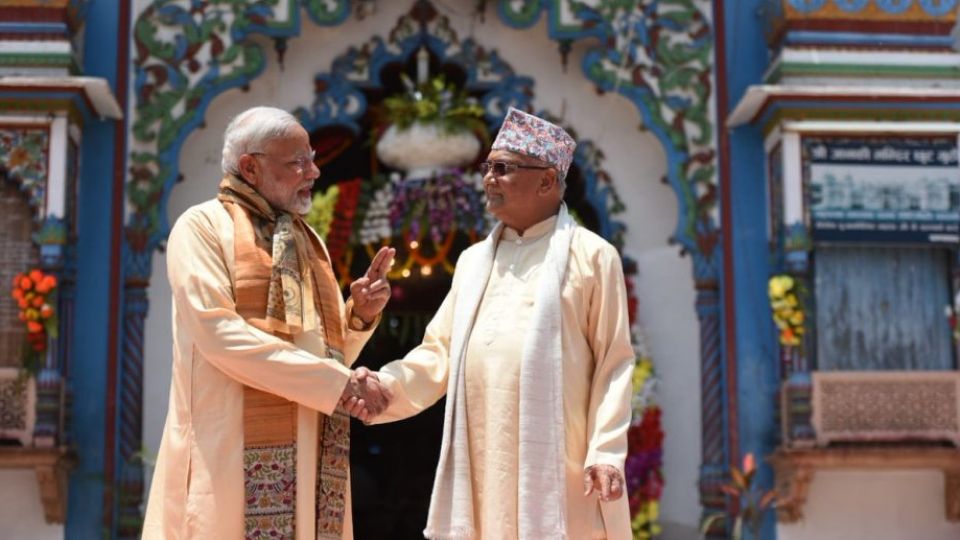May 15, 2018
On his recent visit to Nepal, Prime Minister Narendra Modi put to good use religion and culture to firm India’s ties with the Himalayan nation.
Indian Prime Minister Narendra Modi, who was on a two-day trip to Nepal over the weekend (May 11-12), highlighted the religious and cultural linkages between the two neighbours to improve ties with the Himalayan nation.
This was Modi’s first visit to Nepal after the 2015 border blockade, an unofficial blockade of areas bordering India, which crippled Nepal’s economy.
The blockade was organised following the promulgation of Nepal’s first Constitution, which many said had failed to address the demands of ethnic Madhesis, a group living in southern Nepal along the Indian frontier. The Madhesis, who constitute more than one-third of the country’s population, have long felt marginalised by the northern hill people, and often their loyalty has been questioned due to their close relations with India.
Modi’s visit was high on symbolism – with him putting to good use religion and culture to firm India’s ties with Nepal. He began his trip (the third to this Himalayan nation since taking over as prime minister) with a prayer at the Janaki Temple in Janakpur, the region bordering the Indian state of Bihar.
His Nepali counterpart KP Oli welcomed him in Janakpur, the birthplace of Sita, the wife of Hindu god Ram in the epic Ramayana. The two leaders launched a bus service from Janakpur to Ayodhya, believed to be the birthplace of Ram, completing the “Ramayana circuit”.
Modi also visited another Hindu pilgrimage site, Pashupatinath Temple in Muktinath near the Tibet border – projecting himself as a devout Hindu.
Modi and Oli built good rapport during their discussions and agreed to resolve all outstanding issues by September 19, which is Nepal’s Constitution Day. Modi held a one-on-one meeting with Oli followed by marathon delegation-level talks on all aspects of the bilateral relationship. He said India was with Nepal in its development journey. Oli said the two countries have agreed to expedite implementation of all pending projects of bilateral cooperation – power, rail, inland waterways, roads – by Nepal’s Constitution Day.
Modi’s emphasis on culture, democracy and development was aimed at opening up to Nepal against the backdrop of India’s strategic rival China making deep inroads into that country.
“Countering hard power by projecting soft power: In contrast to China’s efforts to muscle its way into Nepal, Modi’s current, well-received visit to the Himalayan nation seeks to emphasize India’s historically close cultural, religious, and people-to-people relations with Nepal,” defence analyst Brahma Chellaney tweeted.
The Hindustan Times, too, noted in an editorial that “India’s calculation is that instead of playing to Beijing’s strength, Delhi must leverage its traditional linkages, and convert that into modern opportunities”.
India has assured Kathmandu that it will respect its electoral mandate. “This comes in the wake of active Indian involvement in Nepal, starting from encouraging an anti-monarchy alliance (2005) to expressing its reservations about the Nepali constitution (2015). India is now telling Nepal, your politics is yours and we will respect it,” the editorial read.


